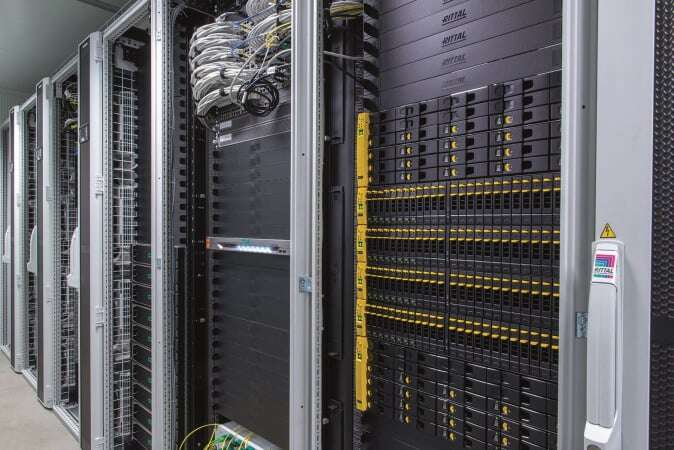By Rittal on Jun 14, 2023 2:08:02 AM
Written by Rittal UK
There are a number of major trends and technologies which are currently reshaping the IT market and changing the requirements for IT infrastructure. These include the IoT, smart devices, driverless vehicles, cryptocurrency data mining, artificial intelligence, internet shopping, content streaming and online gaming to name but a few.

Written by Rittal UK
There are a number of major trends and technologies which are currently reshaping the IT market and changing the requirements for IT infrastructure. These include the IoT, smart devices, driverless vehicles, cryptocurrency data mining, artificial intelligence, internet shopping, content streaming and online gaming to name but a few.
IT infrastructure requirements must now accommodate greater demands for:
- Low latency, local data processing and high autonomy of infrastructure
- System wide security
- High bandwidth
Added to which, there are industry-specific requirements, such as the need for particularly high physical protection in harsh manufacturing environments.
For these reasons we are seeing local IT resources - placing computing resources at the perimeter of a given network - to become more widely deployed. This deployment has been dubbed edge computing, and it ensures that latency is low (packet round trips of less than 100ms, with 25ms being desirable), thus making data readily available to a growing number of applications.
Edge thereby flips the computing paradigm, pushing computing and data closer to end-users and, in response, IT vendors are developing some innovative solutions which are tailored to sector needs.
Speed on the Edge
This rise of edge computing is expected to be fast and immediate. Gartner, for example, predicts that 50% of all data will be processed in an edge environment by 2022, compared to just 10 per cent today. In its research paper 'The Edge will eat the Cloud', the organisation predicts that the cloud won't die out, but that its role will shift, and that edge computing will have a massive impact on the IT infrastructure market.
The focus for edge is typically on the immediate processing capacity required at the source of data; making it as fast and secure as possible.
For example, in smart internet grocery distribution centres, robots sensors and actuators continuously relay information on the status of processes and infrastructure. This forms the basis for innovative services such as alerts, predictive maintenance, and machine self-optimisation, delivered by the company's IT department in real time. For this to happen, and for rapid responses to events and anomalies, it's critical to have low latency between production and the IT infrastructure. A cloud data centre could struggle to support these scenarios.
Turn-Key Edge Data Centre Solutions
With all this in mind, many vendors are introducing edge data centre solutions: an end-to-end product with standardised, preconfigured IT infrastructure which can be implemented rapidly and cost-effectively paving the way for Industry 4.0 applications.
For clients, the main features of a universal edge solution are:
- Global reach and off-the-shelf availability
- Highest quality, well-engineered solutions, supporting globally accepted standards
- Maximum flexibility with highly scalable options
Depending on the scale of the application, an edge data centre could comprise:
- A single self-contained rack with power and cooling
- A rack suite of multiple racks, typically up to 10, with power and cooling
- A containerised solution with power, cooling, and fire suppression
- Moreover, to safeguard critical components from heat, dust and dirt in industrial environment, it needs to be possible to implement in a self-contained, high-availability room.
Some vendors are now combining typical as-a-service' offerings providing complete, one-stop solutions for those enterprises (regardless of size) that don't want to manage their own systems.
Web-Based Configurators
To streamline edge data centre planning, many vendors now offer specialised web-based configurators which means compact and small enclosures can now be quickly and easily configured online. Customers can choose the right accessories without reference to a catalogue, then position and prepare the enclosure for mechanical processing.
Self-Managed or Managed Services
Data-centre-as-a-service (DCaaS) offerings are now a viable alternative for end users who would prefer not to operate the edge data centre themselves. They are then free to focus on their core tasks while harnessing the benefits of the IoT for their business.
Hand-in-hand with IT-as-a-service (ITaaS) platform providers, the IT industry also offers private-cloud data centres in shipping containers, plus ITaaS. These containers are fully equipped with all key active components, such as servers, network connectivity and storage for immediate and rapid deployment/use.
You might also like: Smart ways to maximise your colocation space

